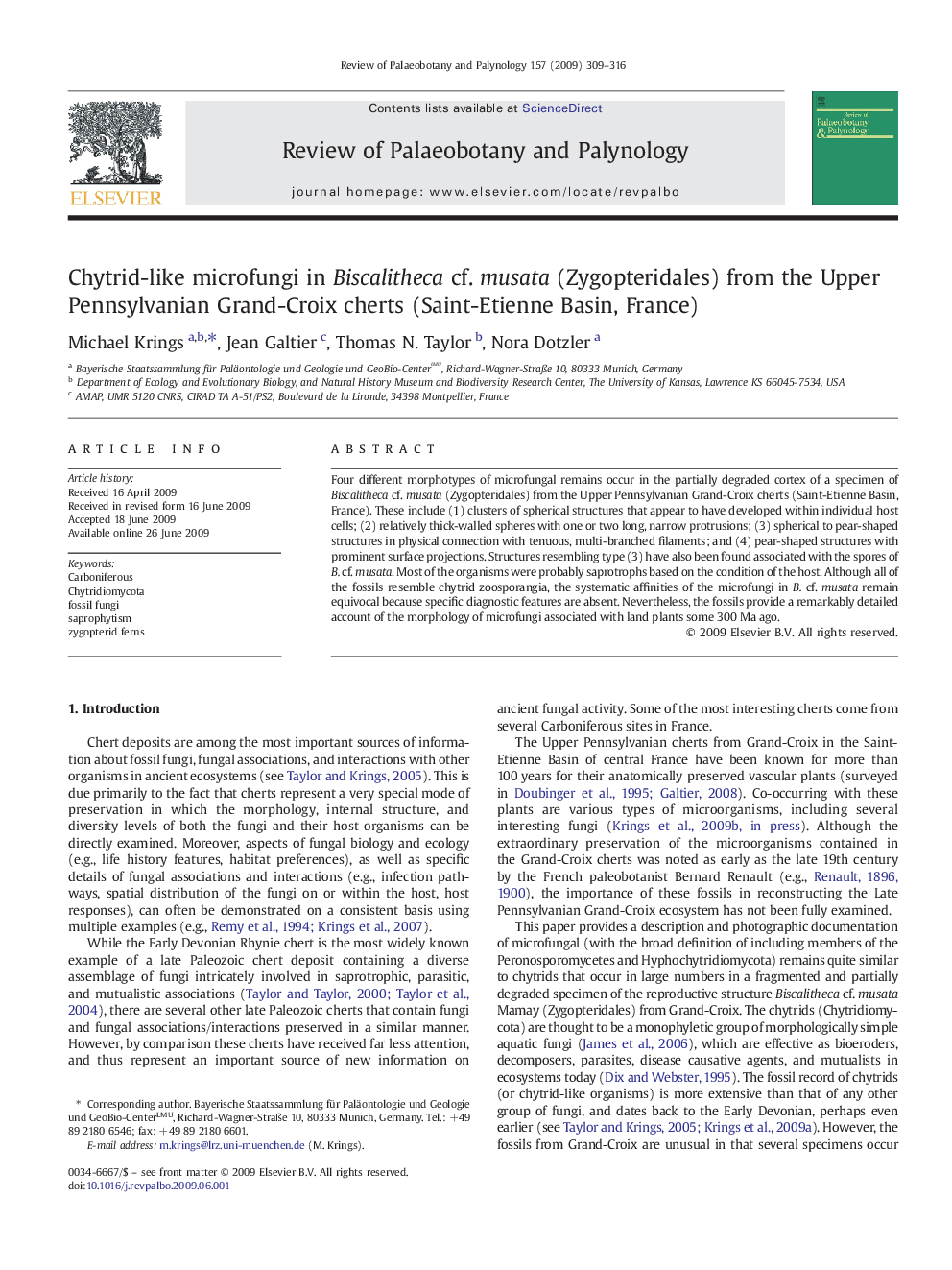| Article ID | Journal | Published Year | Pages | File Type |
|---|---|---|---|---|
| 4750974 | Review of Palaeobotany and Palynology | 2009 | 8 Pages |
Four different morphotypes of microfungal remains occur in the partially degraded cortex of a specimen of Biscalitheca cf. musata (Zygopteridales) from the Upper Pennsylvanian Grand-Croix cherts (Saint-Etienne Basin, France). These include (1) clusters of spherical structures that appear to have developed within individual host cells; (2) relatively thick-walled spheres with one or two long, narrow protrusions; (3) spherical to pear-shaped structures in physical connection with tenuous, multi-branched filaments; and (4) pear-shaped structures with prominent surface projections. Structures resembling type (3) have also been found associated with the spores of B. cf. musata. Most of the organisms were probably saprotrophs based on the condition of the host. Although all of the fossils resemble chytrid zoosporangia, the systematic affinities of the microfungi in B. cf. musata remain equivocal because specific diagnostic features are absent. Nevertheless, the fossils provide a remarkably detailed account of the morphology of microfungi associated with land plants some 300 Ma ago.
